Do you have a question about the Anritsu MS2024B and is the answer not in the manual?
Provides general information about vector network analysis with Anritsu handheld instruments.
Provides contact information and website resources for Anritsu sales, service, and support.
Lists the Vector Network Analyzer instrument models covered by this guide.
States that VNA Master and LMR Master connectors are described in the user guide.
Overviews display features found in VNA Master and S412E LMR Master.
Details the flexible display capabilities, including single, dual, tri, and quad displays for traces.
Explains marker functions for extracting trace results and setting measurement limits.
Describes trace math for comparing two traces using mathematical operations.
Covers VNA measurement capabilities, instrument architecture, and S-parameters.
Defines reflection and transmission measurements using S-parameters for 2-port networks.
Explains the 1-path and full-reversing architectures of VNA Master instruments.
Details supported display types for S-parameters like Log Magnitude, SWR, and Phase.
Explains how markers can extract information from traces in various formats.
Describes the VNA Master's ability to provide DC bias voltage at the RF port with Option 10.
Introduces VNA measurements, calibration types, IFBW, power levels, and graph types.
Details the technique for conducting a 1-port cable measurement, ideal for field use.
Shows how a Smith Chart is used for tuning input match and reveals matching elements.
Describes filter measurements, setup considerations, and calibration for 2-port devices.
Explains amplifier measurements, including setting source power to low mode for linearity.
Discusses waveguide measurements and calibration differences from coaxial.
Covers 2-port calibration types, simple connection, and full 2-port calibration for accuracy.
Describes VNA measurements in Field measurements view and its differences from VNA view.
Explains how to change between Field and VNA measurement views for user comfort.
Details how to set up Field measurements, including frequency range and calibration.
Lists available graph types in Field Measurements view and VNA Measurements view.
Explains Return Loss and VSWR usage for characterizing RF components and systems.
Details the transmission feed line insertion loss test for signal attenuation level of the cable.
Explains DTF measurements for identifying faults or discontinuities along a cable or waveguide.
Describes how to display Return Loss and Insertion Loss phase measurements.
Explains how the MS20xxB VNA Master or S412E LMR Master display 1-port measurements on a Smith Chart.
Describes 1-port and 2-port measurements in Single, Dual, and Overlay display formats.
Introduces menus found in VNA measurement view and options available on models.
Provides a quick reference to principal menus in the Vector Network Analyzer.
Details menus for setting up Frequency, Time, Distance, and FGT domains.
Covers calibration types, methods, DUT port setup, and calibration data.
Explains how to specify limit lines (upper/lower) for visual reference or pass/fail criteria.
Details marker functions including selecting markers, types, search, and readout styles.
Covers menus for active trace, S-parameters, graph types, domain selection, and trace formats.
Explains interaction with system attributes like status, self-test, and options.
Introduces menus found in Field measurements view and differences from VNA view.
Presents the principal Field View menus as a quick reference.
Details the Frequency menus for both frequency-based and distance-based setups.
Covers Distance Menus including DTF setup, cable lists, and windowing options.
Explains how soft keys in the Scale menu depend on the Display Type setting.
Details sweep menus for Run/Hold, Sweep Type, Data Points, Avg/Smooth, and Source Power.
Covers Measure menus for Display Type, Measurement Type, and IFBW for Field View.
Explains calibration types (1-Port, 2-Port) and calibration correction status.
Details how to choose between Field and VNA measurements views.
Introduces the optional Time Domain feature for coaxial and waveguide measurements.
Explains transforming frequency domain data into time or distance domain information.
Describes the trace-based Time Domain implementation and one-way vs round-trip propagation.
Explains windowing as a frequency filter applied during time-domain data conversion.
Details how to perform DTF measurements to find faults along cables or waveguides.
Provides information on resolution and maximum range for time and distance setup.
Introduces the Distance Domain feature, previously Option 501, now standard in newer firmware.
Explains transforming frequency domain data into distance domain information.
Describes the trace-based Distance Domain implementation and one-way vs round-trip propagation.
Explains windowing as a frequency filter applied during distance-domain data conversion.
Details how to perform DTF measurements to find faults along cables or waveguides.
Provides information on resolution and maximum range for distance setup.
Introduces Option 10, providing an internal bias tee for VNA Master and S412E LMR Master.
Explains the bias arm connected to an internal power source for providing voltage.
Describes the ability to provide DC bias voltage at the RF port for testing amplifiers.
Details using Bias Tee for 2-port gain measurements, with High and Low power levels.
Explains how to access Bias Tee menus for specific VNA Master models in VNA view.
Details Bias Tee menus used in the Field Measurements view for MS20xxB and S412E.
Explains accessing Bias Tee menus for MS20xxB and S412E in VNA Measurements mode.
Introduces Vector Voltmeter mode (Option 15) as a tool for ensuring phase match between RF cables.
Shows a block diagram comparison of test configurations for Vector Voltmeter and VNA.
Guides on selecting CW frequency and performing 1-port or 2-port calibration for measurements.
Explains insertion and reflection techniques used by the VVM function.
Provides a step-by-step procedure for performing a simple measurement using CW display.
Summarizes the meaning of calibration correction status displays.
Describes operations for relative measurements, focusing on phase matching among cables.
Explains the convenient table display for comparing up to twelve cables and outputting reports.
Lists the function hard keys and soft keys available in Vector Voltmeter mode.
Introduces Option 77 for measuring S-parameters of balanced and differential test configurations.
Details measuring four additional S-parameters: differential and common mode reflection coefficients.
Shows examples of measuring differential match (Sd1d1) in frequency and distance domains.
Lists formulas for Reflection Coefficient, Return Loss, VSWR, Smith Chart, and Electrical Length.
Explains the theoretical requirement for inverse FFT and how windowing affects the spectrum.
Provides a list of information and error messages that could be displayed on the test instrument.
Explains how to reset the instrument to Factory Defaults or perform a Master Reset.
Lists error messages related to Self Test and Application Self Test functions.
Details operation error messages such as Fan Failure and High Temp Warning.
Lists specific warning messages related to Bias Tee, calibration, and reference signals.
Provides general information about vector network analysis with Anritsu handheld instruments.
Provides contact information and website resources for Anritsu sales, service, and support.
Lists the Vector Network Analyzer instrument models covered by this guide.
States that VNA Master and LMR Master connectors are described in the user guide.
Overviews display features found in VNA Master and S412E LMR Master.
Details the flexible display capabilities, including single, dual, tri, and quad displays for traces.
Explains marker functions for extracting trace results and setting measurement limits.
Describes trace math for comparing two traces using mathematical operations.
Covers VNA measurement capabilities, instrument architecture, and S-parameters.
Defines reflection and transmission measurements using S-parameters for 2-port networks.
Explains the 1-path and full-reversing architectures of VNA Master instruments.
Details supported display types for S-parameters like Log Magnitude, SWR, and Phase.
Explains how markers can extract information from traces in various formats.
Describes the VNA Master's ability to provide DC bias voltage at the RF port with Option 10.
Introduces VNA measurements, calibration types, IFBW, power levels, and graph types.
Details the technique for conducting a 1-port cable measurement, ideal for field use.
Shows how a Smith Chart is used for tuning input match and reveals matching elements.
Describes filter measurements, setup considerations, and calibration for 2-port devices.
Explains amplifier measurements, including setting source power to low mode for linearity.
Discusses waveguide measurements and calibration differences from coaxial.
Covers 2-port calibration types, simple connection, and full 2-port calibration for accuracy.
Describes VNA measurements in Field measurements view and its differences from VNA view.
Explains how to change between Field and VNA measurement views for user comfort.
Details how to set up Field measurements, including frequency range and calibration.
Lists available graph types in Field Measurements view and VNA Measurements view.
Explains Return Loss and VSWR usage for characterizing RF components and systems.
Details the transmission feed line insertion loss test for signal attenuation level of the cable.
Explains DTF measurements for identifying faults or discontinuities along a cable or waveguide.
Describes how to display Return Loss and Insertion Loss phase measurements.
Explains how the MS20xxB VNA Master or S412E LMR Master display 1-port measurements on a Smith Chart.
Describes 1-port and 2-port measurements in Single, Dual, and Overlay display formats.
Introduces menus found in VNA measurement view and options available on models.
Provides a quick reference to principal menus in the Vector Network Analyzer.
Details menus for setting up Frequency, Time, Distance, and FGT domains.
Covers calibration types, methods, DUT port setup, and calibration data.
Explains how to specify limit lines (upper/lower) for visual reference or pass/fail criteria.
Details marker functions including selecting markers, types, search, and readout styles.
Covers menus for active trace, S-parameters, graph types, domain selection, and trace formats.
Explains interaction with system attributes like status, self-test, and options.
Introduces menus found in Field measurements view and differences from VNA view.
Presents the principal Field View menus as a quick reference.
Details the Frequency menus for both frequency-based and distance-based setups.
Covers Distance Menus including DTF setup, cable lists, and windowing options.
Explains how soft keys in the Scale menu depend on the Display Type setting.
Details sweep menus for Run/Hold, Sweep Type, Data Points, Avg/Smooth, and Source Power.
Covers Measure menus for Display Type, Measurement Type, and IFBW for Field View.
Explains calibration types (1-Port, 2-Port) and calibration correction status.
Details how to choose between Field and VNA measurements views.
Introduces the optional Time Domain feature for coaxial and waveguide measurements.
Explains transforming frequency domain data into time or distance domain information.
Describes the trace-based Time Domain implementation and one-way vs round-trip propagation.
Explains windowing as a frequency filter applied during time-domain data conversion.
Details how to perform DTF measurements to find faults along cables or waveguides.
Provides information on resolution and maximum range for time and distance setup.
Introduces the Distance Domain feature, previously Option 501, now standard in newer firmware.
Explains transforming frequency domain data into distance domain information.
Describes the trace-based Distance Domain implementation and one-way vs round-trip propagation.
Explains windowing as a frequency filter applied during distance-domain data conversion.
Details how to perform DTF measurements to find faults along cables or waveguides.
Provides information on resolution and maximum range for distance setup.
Introduces Option 10, providing an internal bias tee for VNA Master and S412E LMR Master.
Explains the bias arm connected to an internal power source for providing voltage.
Describes the ability to provide DC bias voltage at the RF port for testing amplifiers.
Details using Bias Tee for 2-port gain measurements, with High and Low power levels.
Explains how to access Bias Tee menus for specific VNA Master models in VNA view.
Details Bias Tee menus used in the Field Measurements view for MS20xxB and S412E.
Explains accessing Bias Tee menus for MS20xxB and S412E in VNA Measurements mode.
Introduces Vector Voltmeter mode (Option 15) as a tool for ensuring phase match between RF cables.
Shows a block diagram comparison of test configurations for Vector Voltmeter and VNA.
Guides on selecting CW frequency and performing 1-port or 2-port calibration for measurements.
Explains insertion and reflection techniques used by the VVM function.
Provides a step-by-step procedure for performing a simple measurement using CW display.
Summarizes the meaning of calibration correction status displays.
Describes operations for relative measurements, focusing on phase matching among cables.
Explains the convenient table display for comparing up to twelve cables and outputting reports.
Lists the function hard keys and soft keys available in Vector Voltmeter mode.
Introduces Option 77 for measuring S-parameters of balanced and differential test configurations.
Details measuring four additional S-parameters: differential and common mode reflection coefficients.
Shows examples of measuring differential match (Sd1d1) in frequency and distance domains.
Lists formulas for Reflection Coefficient, Return Loss, VSWR, Smith Chart, and Electrical Length.
Explains the theoretical requirement for inverse FFT and how windowing affects the spectrum.
Provides a list of information and error messages that could be displayed on the test instrument.
Explains how to reset the instrument to Factory Defaults or perform a Master Reset.
Lists error messages related to Self Test and Application Self Test functions.
Details operation error messages such as Fan Failure and High Temp Warning.
Lists specific warning messages related to Bias Tee, calibration, and reference signals.
| Dynamic Range | >100 dB |
|---|---|
| Operating Temperature | 0°C to +50°C |
| Video Bandwidth (VBW) | 1 Hz to 3 MHz |
| Impedance | 50 ohms |
| GPS | Optional |
| Battery | Lithium-ion rechargeable |
| Resolution Bandwidth (RBW) | 3 MHz |
| Interface | USB, Ethernet |
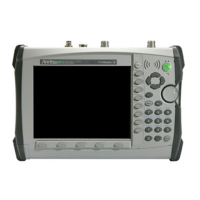
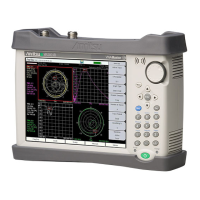
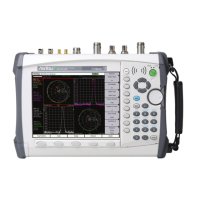





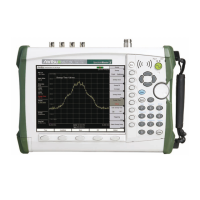
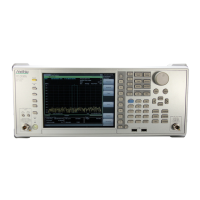

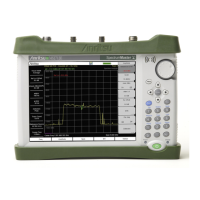
